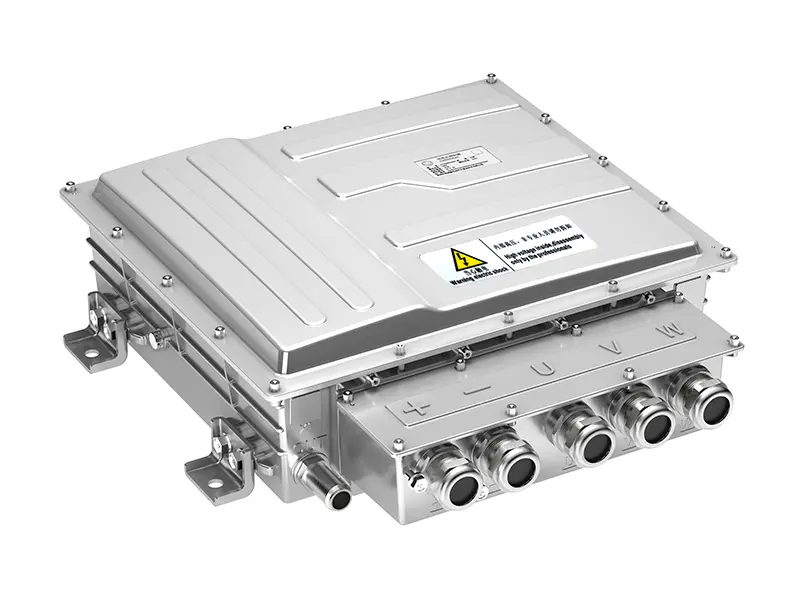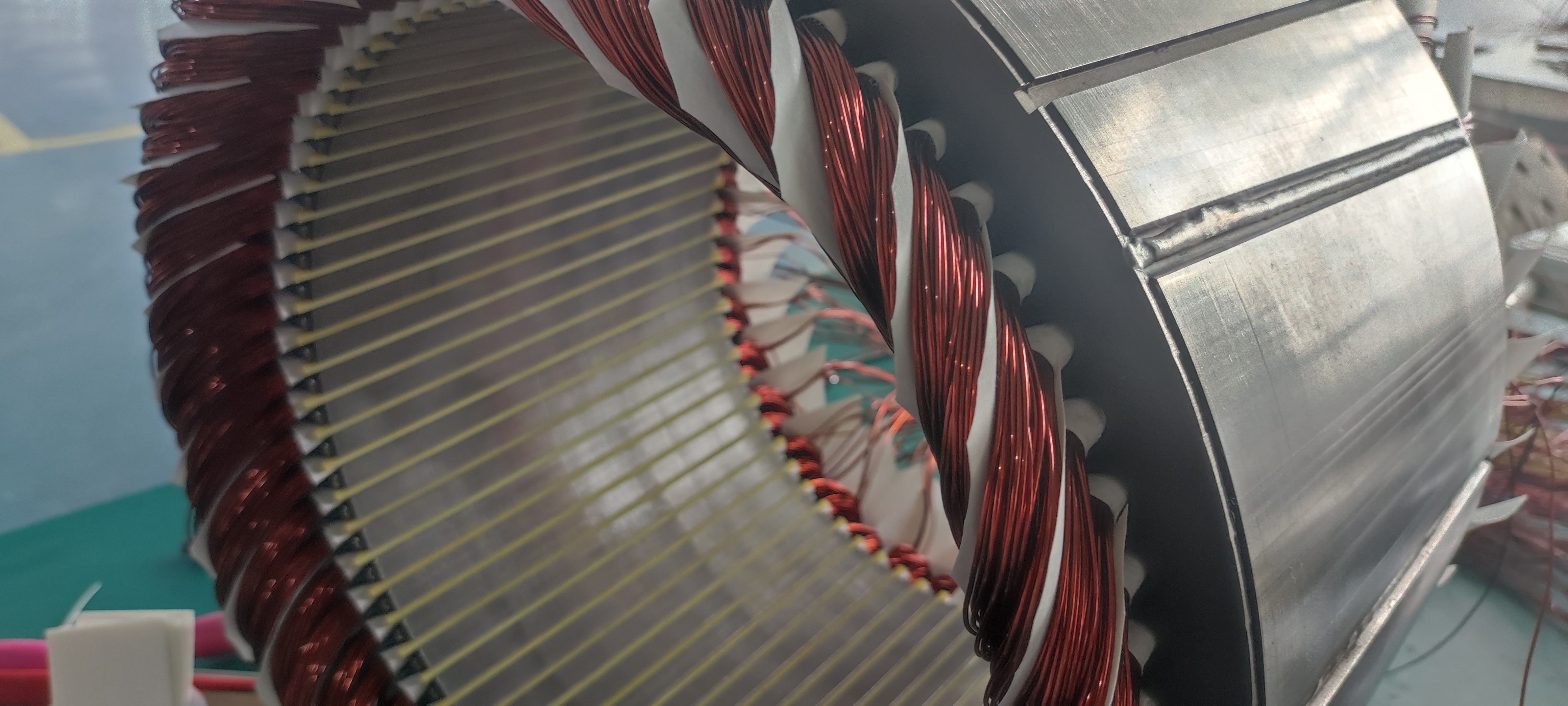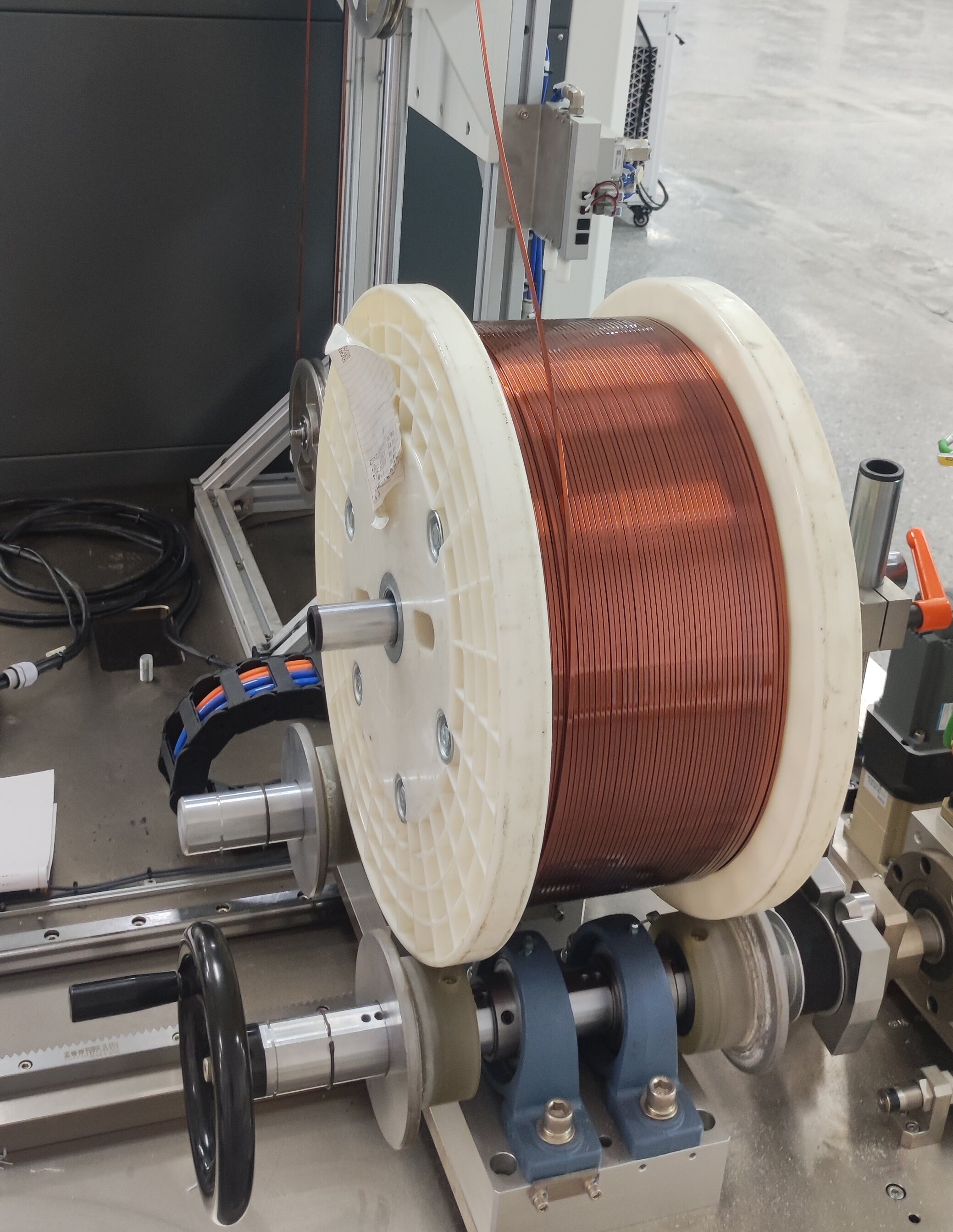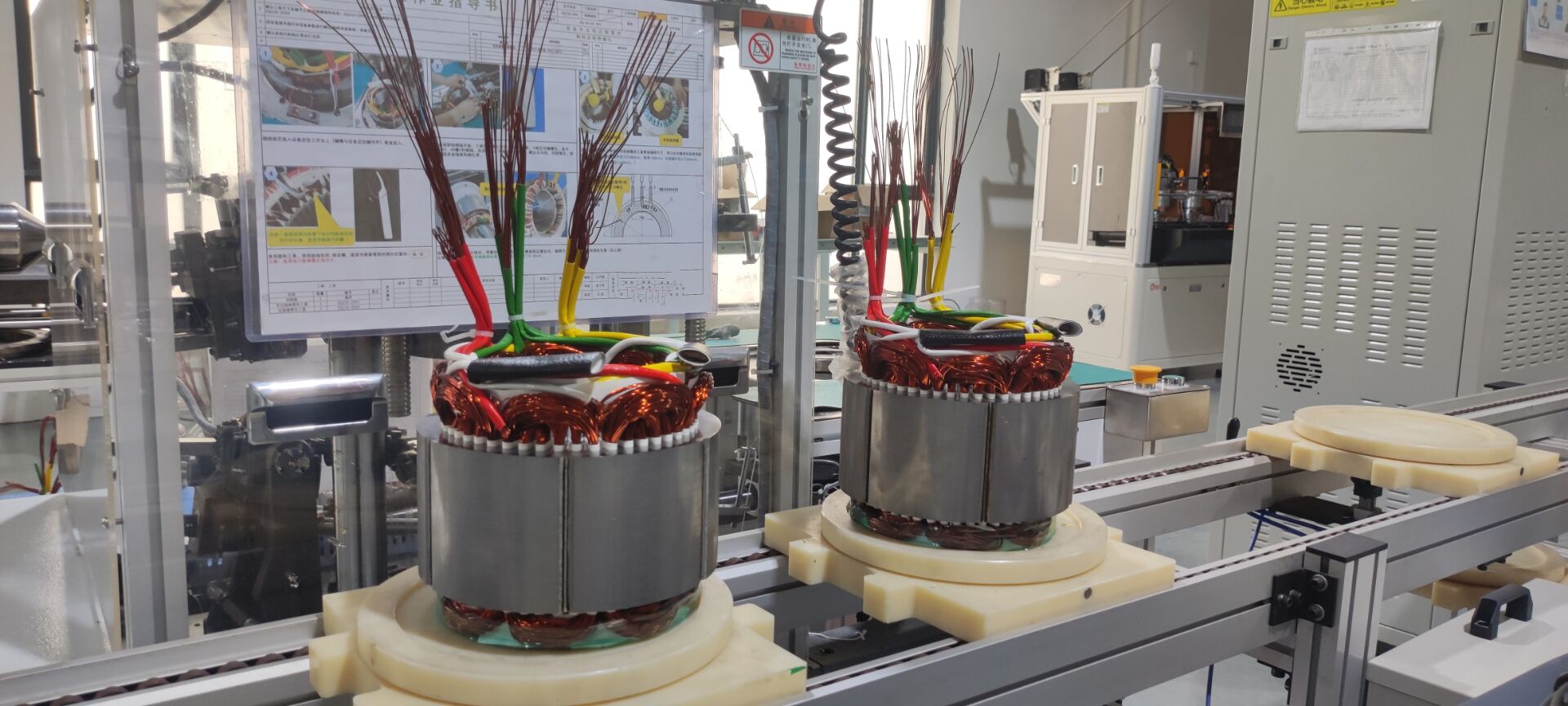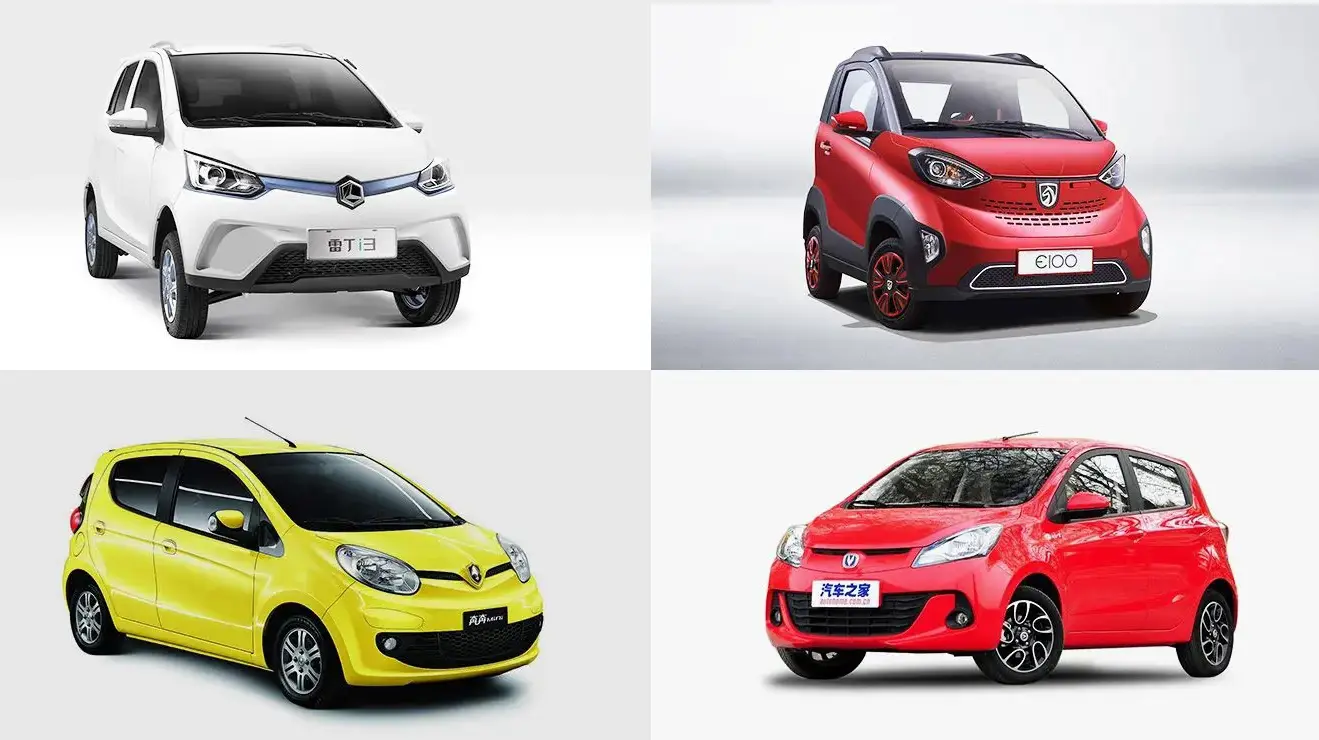The Role of a Motor Control Unit for Electric Vehicle
Introduction
The transition to electric vehicles (EVs) is one of the most significant trends in the automotive industry today. As consumers, governments, and industries alike push toward sustainable and environmentally friendly alternatives to traditional combustion engine vehicles, electric cars have emerged as a key solution. According to the International Energy Agency (IEA), in 2022, global electric car sales reached 10 million units, accounting for 14% of all global car sales, up from 4.3% in 2020. The EV market is expected to continue growing rapidly, with estimates suggesting that electric vehicle sales will make up 58% of global car sales by 2030 (IEA, 2023). This rapid growth is partly driven by technological advancements in EV powertrains, particularly in the motor control unit (MCU) and its associated motor control systems.
The motor control unit is a critical component in the powertrain of an electric vehicle. It functions as the "brain" of the vehicle's electric motor, controlling its speed, torque, and overall performance. This unit ensures that the electric motor runs efficiently, safely, and in coordination with the battery and other vehicle systems. In this blog, we will delve deeper into the role of the MCU in electric vehicles, explore how it works, look at cutting-edge technologies, and examine how innovations in the motor control system are shaping the future of electric transportation.
What is a Motor Control Unit (MCU)?
A motor control unit (MCU) is an electronic system that regulates the performance of an electric motor. It acts as the controller for the motor, responsible for ensuring that the motor operates in an optimal manner by controlling key parameters like speed, torque, and direction. In an electric vehicle, the MCU is responsible for communicating with several vehicle systems, including the battery management system (BMS), regenerative braking system, and the driver interface.
At a high level, an MCU is composed of several core components:
- Power Electronics: The power electronics circuit is responsible for controlling the flow of energy from the battery to the electric motor. It uses power transistors like IGBTs (Insulated-Gate Bipolar Transistors) or MOSFETs (Metal-Oxide-Semiconductor Field-Effect Transistors) to convert DC power into alternating current (AC) for use by the motor.
- Microcontroller: This is the central processing unit (CPU) of the MCU, which runs the algorithms that determine motor operation. It takes input from various sensors, processes this data, and sends commands to the power electronics to adjust motor performance.
- Communication Interfaces: Modern MCUs use communication protocols such as Controller Area Network (CAN) buses to relay information between the MCU, the battery management system, regenerative braking, and other subsystems within the EV.
The motor control system includes all the components necessary for regulating motor performance, but the MCU itself is the key driver of motor behavior in terms of functionality and efficiency. It operates based on inputs from the driver and data from various sensors that monitor factors such as speed, torque, and battery charge.

Types of Motor Control Units
Motor Control Units (MCUs) are classified based on the type of motor they control. Since motors can be powered by either alternating current (AC) or direct current (DC), MCUs are designed differently to meet the operational characteristics and requirements of each motor type. Broadly, motor control units can be divided into two main categories: AC Motor Control Units and DC Motor Control Units. Let’s dive deeper into each type, their specific functionalities, and their applications in electric vehicles (EVs).
AC Motor Control Units
AC motors are commonly used in electric vehicles because of their ability to provide higher efficiency, better performance, and a longer lifespan compared to DC motors. The AC motor control unit (AC MCU) is responsible for controlling the operation of AC motors, which include synchronous motors and asynchronous (induction) motors.
Key Functions of AC Motor Control Units
- Conversion of DC to AC: In an EV, the battery provides direct current (DC) power. The AC MCU must convert this DC power into AC, which is required by the AC motor. This is done using a inverter, a key component of the MCU.
- Speed and Torque Control: The AC MCU controls the motor's speed and torque by adjusting the frequency and amplitude of the AC current supplied to the motor. This allows the vehicle to accelerate, decelerate, or maintain a steady speed efficiently.
- Regenerative Braking: Just like in DC motors, AC motors can also use regenerative braking, and the AC MCU controls this process by reversing the direction of the motor's operation to convert kinetic energy into electrical energy, which is fed back into the battery.
- Motor Protection: AC MCUs include built-in safety features like overcurrent protection, thermal management, and fault detection. These ensure the motor operates within safe parameters, preventing damage due to overheating, electrical faults, or mechanical issues.
Types of AC Motors in Electric Vehicles
- Synchronous AC Motors: In synchronous motors, the rotor rotates at the same speed as the stator’s rotating magnetic field. These motors are more efficient at higher speeds and are often used in higher-performance electric vehicles.
- Induction Motors (Asynchronous Motors): Induction motors, the most common type used in electric vehicles, do not require permanent magnets in the rotor, which reduces cost and complexity. Induction motors are known for their robustness and are widely used in mainstream EVs (such as those made by Tesla, which uses induction motors in many of its models).
DC Motor Control Units
While AC motors are more commonly used in electric vehicles, DC motors still have specific applications where their performance characteristics are advantageous. The DC motor control unit (DC MCU) is designed to control DC motors, which can be found in specific types of EVs or in auxiliary systems within a larger EV platform.
Key Functions of DC Motor Control Units
- Speed and Torque Control: DC motors are naturally simpler to control in terms of speed and torque. The DC MCU adjusts the voltage supplied to the motor to change its speed or torque. This can be done using either PWM (Pulse Width Modulation) or other techniques like field weakening.
- Reversing Motor Direction: DC motors are easy to reverse by simply swapping the polarity of the supplied voltage. The DC MCU facilitates this by switching the direction of the current, allowing the vehicle to move forward or backward smoothly.
- Regenerative Braking: Just as with AC motors, DC motors can also use regenerative braking. The DC motor control unit ensures that the kinetic energy of the vehicle is converted into electrical energy during braking and sent back to the battery.
- Battery Protection: The DC MCU also works in conjunction with the battery management system (BMS) to protect the battery from overcurrent, overheating, and deep discharge.
Types of DC Motors in Electric Vehicles
- Brushed DC Motors: These motors use a set of brushes to deliver current to the rotor, creating the necessary magnetic field for motor rotation. While brushed DC motors are simple and cost-effective, they wear out over time due to friction between the brushes and the commutator. They are generally used in smaller or less powerful EVs or in auxiliary systems (such as electric scooters).
- Brushless DC Motors (BLDC): These motors have no brushes, using electronic controllers instead to switch the current in the windings of the stator. This reduces maintenance and increases the efficiency and lifespan of the motor. Brushless DC motors are commonly used in modern EVs, including smaller vehicles like e-bikes and electric scooters.
Key Functions of an MCU in Electric Vehicles

1. Motor Operation Control
The primary role of the motor control unit is to control the operation of the electric motor. This includes regulating three critical parameters: speed, torque, and direction. The MCU ensures that the motor runs efficiently and responds to the driver’s commands in real time.
- Speed Control: The MCU manages the speed of the electric motor by adjusting the voltage and frequency of the power supplied to it. By varying the voltage, the MCU can increase or decrease the motor's speed, ensuring that the vehicle accelerates or decelerates smoothly. The driver’s throttle input directly affects the MCU's speed regulation algorithms, which dictate how much power should be sent to the motor.
- Torque Control: Torque refers to the rotational force generated by the electric motor. It is crucial for the vehicle's ability to accelerate, climb hills, or provide rapid power on demand. The MCU is responsible for adjusting the motor’s torque output based on factors like the vehicle’s speed, load, and battery charge state. By controlling torque, the MCU ensures smooth and efficient driving, whether the vehicle is starting from a stop or accelerating at highway speeds.
- Direction Control: The MCU can change the direction of motor rotation, allowing the vehicle to move forward or reverse. In the case of most electric vehicles, the direction is controlled by reversing the flow of electricity in the motor windings. The MCU makes this adjustment seamlessly based on input from the driver.
These core motor operation controls ensure that the EV behaves predictably and efficiently across different driving conditions. Whether in stop-and-go traffic or cruising on the highway, the MCU enables the electric motor to respond to the driver’s inputs with precision and responsiveness.
2. Energy Management
In an electric vehicle, efficient energy management is essential for maximizing driving range and ensuring battery longevity. The MCU is responsible for managing the flow of energy between the battery and the electric motor, ensuring that the vehicle operates at peak efficiency while protecting the battery from damage.
- Energy Efficiency: The MCU adjusts the power delivered to the motor depending on the driving conditions. The motor control unit (MCU) significantly impacts the energy efficiency of an electric vehicle. For example, induction motors (used in Tesla’s Model S) are known for their high efficiency, with some models achieving 93-95% efficiency in converting electrical energy to mechanical power. The efficiency of the MCU helps EVs maximize the driving range, with well-designed systems improving energy usage by up to 5-10% compared to less optimized solutions.
- Battery Protection: The MCU works closely with the battery management system (BMS) to protect the battery from overcharging, deep discharging, and overheating. By monitoring the battery’s voltage, temperature, and state of charge, the MCU ensures that the battery operates within safe limits, prolonging its lifespan.
- Battery Regeneration: The MCU also plays a role in energy regeneration, specifically through regenerative braking. When the driver applies the brakes, the electric motor operates in reverse, converting kinetic energy back into electrical energy and sending it back to the battery. This can increase overall energy recovery by up to 15-20% in specific driving conditions (such as city driving with frequent stop-and-go traffic). The MCU regulates this process, adjusting the braking force based on the driver’s input and vehicle conditions. Regenerative braking contributes to energy savings and extends the EV’s driving range.
3. Safety Features
Safety is a paramount concern for both vehicle manufacturers and consumers, and the motor control unit plays an important role in ensuring the safe operation of electric vehicles. The MCU is responsible for monitoring the performance of the electric motor and associated systems to prevent accidents, equipment failure, or damage to critical components.
- Fault Detection: The MCU continuously monitors the motor and related systems for faults, such as overheating, short circuits, or malfunctions in the power electronics. If any irregularities are detected, the MCU can automatically trigger safety mechanisms like shutting down the motor or limiting power to protect the system from further damage.
- Overcurrent Protection: One of the risks to both the electric motor and the battery is overcurrent, where the flow of electricity exceeds safe levels, potentially causing overheating or damage. The MCU incorporates protection algorithms that detect when overcurrent conditions occur and take corrective action, such as reducing the motor’s power output or temporarily shutting down the motor.
- Thermal Management: Electric motors and the motor control unit generate heat during operation, and excessive heat can cause damage to both the motor and the electronics. The MCU is responsible for regulating the motor's temperature, often through liquid or air cooling systems, ensuring that the temperature stays within safe operating limits.
4. Communication and Integration
The motor control unit doesn't operate in isolation. It is part of a larger network of systems within the vehicle, all of which must work together to ensure efficient operation. The MCU communicates with other vehicle systems to share data, adjust performance, and improve the overall driving experience.
- Communication with the Battery Management System (BMS): The MCU communicates directly with the BMS to manage the battery's state of charge and health. This allows the MCU to adjust motor performance based on the current charge level of the battery, ensuring that energy is used efficiently.
- Vehicle-wide Integration: Modern electric vehicles are equipped with a range of sensors, controllers, and systems that all need to work together. The MCU connects with various subsystems, including regenerative braking, climate control, and vehicle stability systems, to optimize performance. This integration helps ensure that all vehicle systems work in harmony, providing a smooth and efficient driving experience.
- User Interface Feedback: The motor control unit also communicates with the vehicle's driver interface, providing real-time feedback on vehicle performance. This includes information such as motor speed, battery state of charge, and the status of regenerative braking. This data is essential for drivers to make informed decisions about energy usage and driving behavior.

How the MCU Enhances EV Performance
The performance of an electric vehicle depends heavily on the efficiency and responsiveness of its motor control unit. The MCU’s ability to manage motor performance, optimize energy flow, and ensure safety directly impacts the vehicle’s overall driving experience.
1. Efficient Energy Usage
The primary function of the motor control system is to ensure that the electric motor operates efficiently. By controlling the flow of electricity between the battery and the motor, the MCU maximizes energy usage, which extends the vehicle's range. For instance, when cruising at highway speeds, the MCU adjusts motor power to minimize energy consumption, while accelerating from a stop requires a burst of power to provide the necessary torque.
Efficient energy management is one of the key advantages of electric vehicles over traditional internal combustion engine vehicles, where much of the energy from fuel is lost as heat. With the help of an advanced motor control unit, EVs can achieve much higher efficiency, with some models reaching energy efficiencies above 90%.
2. Smooth Acceleration and Deceleration
Electric vehicles are known for their smooth, quiet acceleration, and this is largely due to the precise control of the motor control unit. The MCU adjusts the power delivered to the motor, providing instantaneous torque when the driver presses the accelerator pedal. The result is a smooth, responsive ride with no lag between pedal input and vehicle acceleration.
Similarly, the motor control unit ensures smooth deceleration through regenerative braking, providing the right amount of braking force without sudden jolts or instability. This improves both driver comfort and vehicle safety, particularly in emergency braking situations.
The Future of Motor Control Systems in EVs
As electric vehicle technology continues to evolve, the motor control unit will become even more advanced. Several innovations are expected to shape the future of the MCU, including:
- Wide-Bandgap Semiconductors: Future MCUs will likely incorporate wide-bandgap semiconductors like silicon carbide (SiC) and gallium nitride (GaN), which offer higher efficiency and can operate at higher temperatures. This will enable faster charging times, greater power density, and improved overall performance.
- Advanced Control Algorithms: With the rise of artificial intelligence and machine learning, future MCUs may be equipped with advanced algorithms that predict driving conditions and optimize energy usage in real time. This could lead to even greater efficiency, extended range, and enhanced driving experiences.
- Autonomous Driving Integration: As autonomous driving technology develops, the motor control system will need to work seamlessly with vehicle sensors, cameras, and AI-driven control systems to provide a smooth and responsive ride. The MCU will likely play a critical role in this integration, ensuring that the vehicle’s motor functions harmonize with the overall driving strategy of an autonomous system.
Faster Charging and Improved Battery Management: Future MCUs will be better equipped to manage high-speed charging and more sophisticated battery management systems, enabling faster charging times and improved battery longevity.
Conclusion
The motor control unit is an essential component of electric vehicles, playing a pivotal role in the management of motor performance, energy efficiency, safety, and integration with other vehicle systems. As the electric vehicle industry continues to grow, the importance of the motor control system will only increase. Innovations in semiconductor technology, control algorithms, and autonomous systems will continue to drive improvements in performance, efficiency, and safety, further enhancing the electric vehicle experience.
With its ability to optimize motor operation, extend battery life, and ensure smooth driving, the motor control unit will remain one of the most critical elements in the next generation of electric vehicles. As EV technology advances, the MCU will help usher in a new era of sustainable, efficient, and high-performance transportation.













